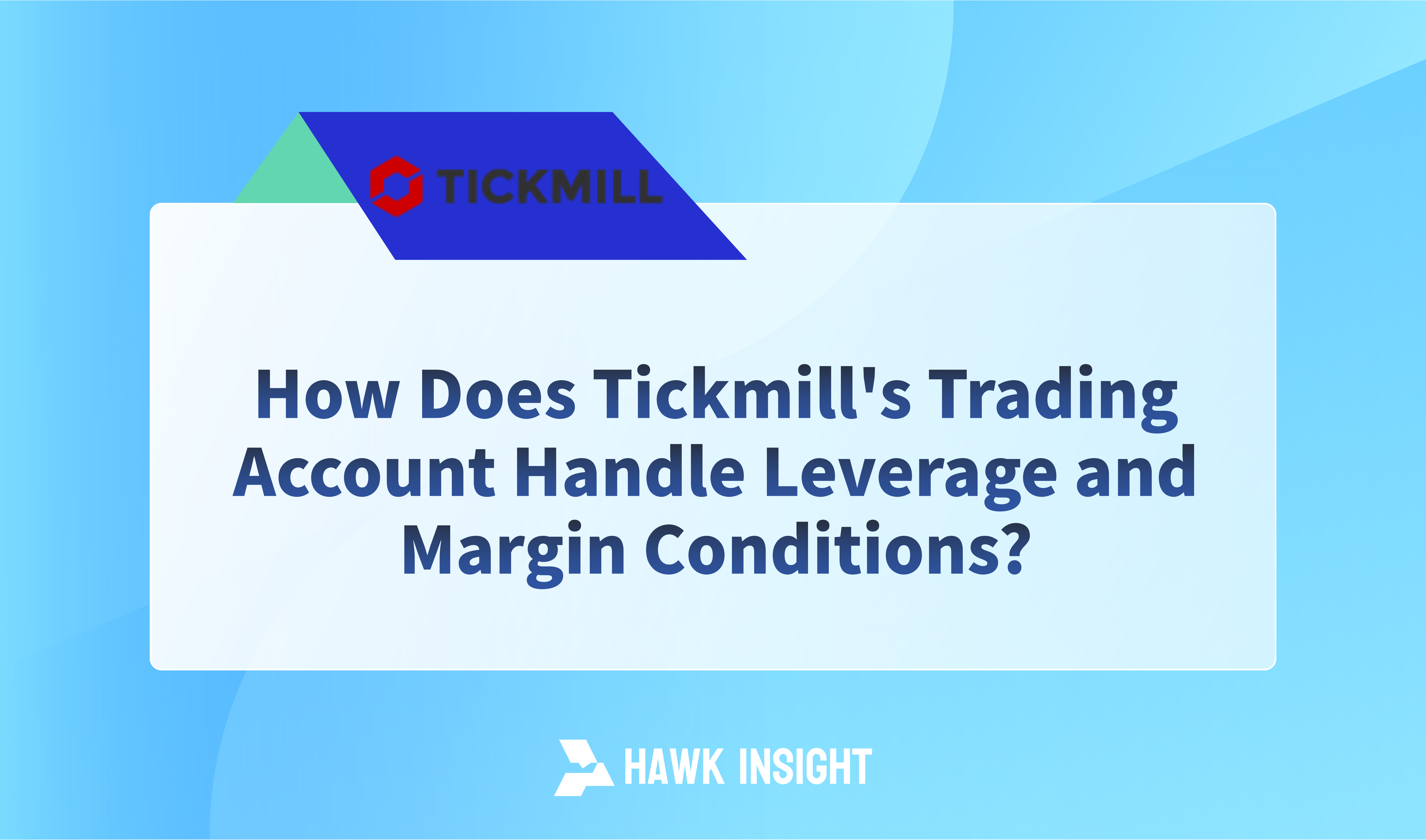How Does Tickmill's Trading Account Handle Leverage and Margin Conditions?
Leverage and margin allow traders to control larger positions with less capital, thereby magnifying potential profit opportunities, but also increasing the risk of potential losses.

The Essence of Leverage
Leverage plays a critical role in forex trading by enabling traders to control positions larger than their actual capital. For instance, with a leverage of 1:100 and $1,000 in the account, a trader can control a position worth $100,000. This capability allows traders to capitalize on market fluctuations for greater profit potential but also requires managing increased market risks.
How Leverage Operates
Using leverage involves borrowing to increase trading positions. While it can amplify potential profits, market fluctuations can also lead to larger losses. Therefore, traders must use leverage cautiously, ensuring effective fund management in high-risk environments.
Risk and Reward
Balancing potential rewards and risks is crucial in leveraged trading. With proper risk management strategies, traders can maximize the advantages of leverage while minimizing potential losses.
The Power and Risks of Leverage in Forex Markets
The forex market attracts global traders with its high liquidity and frequent price fluctuations, especially when leverage is used as a trading tool, providing investors with the opportunity to control large trades. However, the use of leverage also comes with potential high risks that require careful consideration to ensure trading success.
The forex market is one of the world's largest and most liquid financial markets, with enormous daily trading volumes. Market volatility offers traders diverse strategies and profit opportunities, particularly through the use of leverage, allowing traders to control large positions with relatively small capital.
For example, traders can use small amounts of funds for intraday trading, capitalize on short-term price fluctuations, or hedge risk positions.
Nevertheless, leveraging also involves significant market risks. Misjudging market trends or sudden market fluctuations can lead to substantial capital losses. Therefore, understanding and respecting the power of leverage is crucial and must be accompanied by rigorous risk management strategies.
The Importance and Calculation of Margin
In forex trading, margin is a critical mechanism for controlling leverage positions. Margin refers to funds in a trader's account used to cover potential losses, typically expressed as a percentage of the trade size. Brokers set margin requirements based on market volatility and the trader's risk tolerance.
For example, if a trader wishes to open a mini lot (10,000 USD) position on USDJPY, and the broker's margin requirement is 5%, the trader needs to prepare 500 USD in margin (10,000 USD x 5%).
Tickmill Trading Platform and Features
Tickmill offers a diverse range of trading tools and features to ensure traders can adapt flexibly to different market conditions and fully leverage the advantages of leverage.
- Trading Platforms:Tickmill provides MetaTrader 4 and MetaTrader 5, compatible with Windows, OS X, iOS, and Android systems, as well as the Web Trader platform, enabling instant trading without the need for installation.
- Negative Balance Protection:Tickmill offers negative balance protection to ensure clients do not owe more than their account balance due to market fluctuations.
- Trading Hours: Forex trading is available around the clock, while specific trading hours for other instruments such as precious metals, stock indices, and energy commodities may vary based on market conditions.
FAQs
What is leverage and how does it work with margin?
Leverage allows traders to control larger positions with less capital by borrowing funds from the broker. Margin, on the other hand, is the minimum capital required for trades, typically varying by trading instrument and broker.
Is Tickmill a No Dealing Desk (NDD) broker?
Yes, Tickmill operates as a No Dealing Desk (NDD) broker, ensuring clients receive market-best execution prices without re-quotes.
How can I access Tickmill's trading platforms on different devices?
Tickmill's MetaTrader 4 and MetaTrader 5 platforms are compatible with various operating systems, including Windows, OS X, iOS, and Android. Additionally, a Web Trader platform is available for instant trading without the need for downloads.
What is Tickmill's policy on negative balance protection?
Tickmill provides negative balance protection to all clients, ensuring they cannot lose more than their account balance due to market volatility. However, in extreme cases like market abuse or fraud, the company may adjust its protection policy.
Through the detailed analysis above, we can see that Tickmill, as a leading global forex broker, is committed to providing clients with a secure and efficient trading environment, while offering ample opportunities to leverage advantages.
Disclaimer: The views in this article are from the original Creator and do not represent the views or position of Hawk Insight. The content of the article is for reference, communication and learning only, and does not constitute investment advice. If it involves copyright issues, please contact us for deletion.